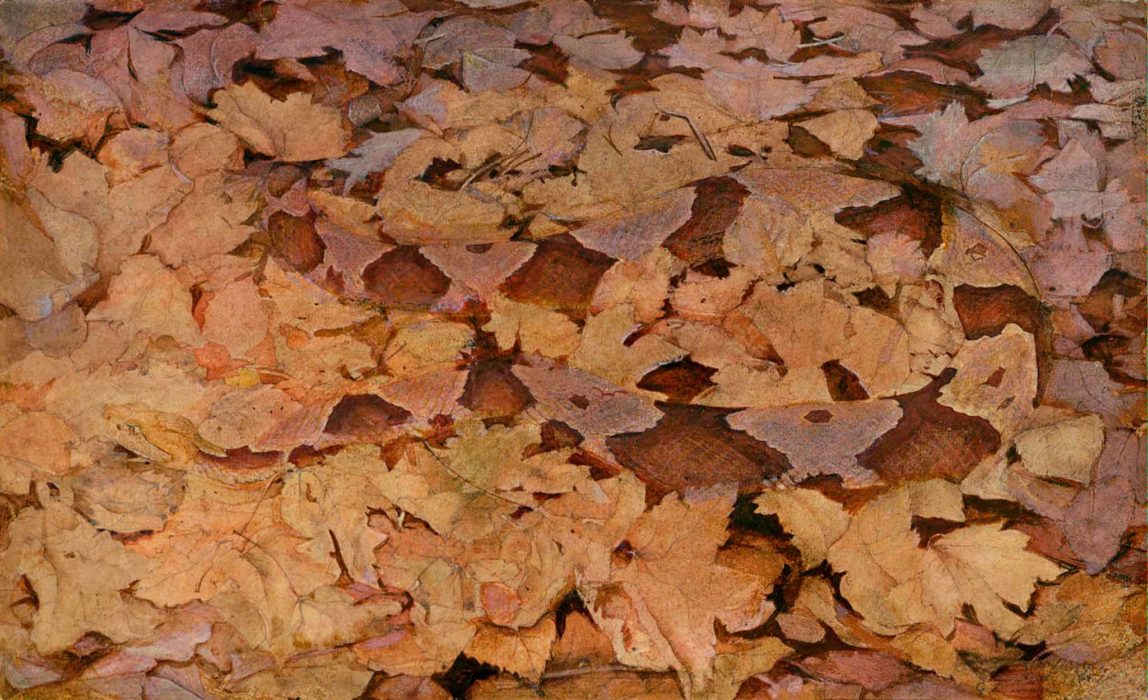“OH, ABBOTT, DON’T DO that!” George de Forest Brush cried, “DON’T!” He stood in his studio in front of his latest perfectly-rendered masterpiece. Abbott Thayer, as was usual, had come to give his opinion on the work. “George,” he said, “I think that there’s a place on that picture where it would be much better if you lowered the tone of it a little bit.” Abbott had just licked his thumb, rubbed it on the dirty floor, and had raised it to the picture ready to lower its tone.
Abbott Handerson Thayer and Brush were best friends. They had studied together in New York and Paris. Unlike Brush, Abbott did not approve of the paintings of Jean-Léon Gérôme: he considered Gérôme to belong to “that raft of whore painters,” given that Gérôme often painted nudes. Brush was so enamored of his teacher that he named his son Gerome. Abbott, however, named his first son Ralph Waldo.
Ralph Waldo Emerson’s writings inspired Thayer. In Emerson’s 1836 essay, “Nature,” he writes: “I see the spectacle of morning from the hilltop over against my house, from daybreak to sunrise, with emotions which angels might share.” It was a sentiment that defined Emerson’s Transcendentalism: the presence of God as reflected in the everyday displays of nature, a way of thinking that resonated with ‘Abdu’l-Bahá.
‘Abdu’l-Bahá stood on the lawn near Day-Spring one day, looking at the view over the hills. “When a man observes the wafting of the breeze,” he said, “hears the rustling of the leaves and sees the swaying of the trees, it is as though all are praising and acknowledging the one true God.”
Abbott Thayer’s fame spread as a painter of the ideal figure. He gave them wings, and they came to be known as “Thayer’s Angels.” Their soft flowing robes mimicked the drapery of Grecian figures and their perfection set into relief the harsh world Thayer saw around him. They were pure and virginal; it was poor, dirty, and greedy.

Later on, Thayer set aside his figures and concentrated on the beauty and grandeur of Dublin and Mount Monadnock. He described what “art” meant to him: “a no-man’s land of immortal beauty where every step leads to God.”
Abbott Thayer and his family live in a house without insulation, built as a summer retreat. His first wife, Kate, had died of an infectious disease, so Thayer makes his family sleep outdoors in three-sided huts even while the snow falls.
Every morning for three hours Abbott works in his studio, humming Beethoven. He passes his work to his students and then roams the countryside, climbing up to his beloved mountain or rowing his boat on the lake. As an ornithologist, Abbott had traveled the world collecting bird specimens, and had formulated the technique of countershading, and “Thayer’s Law” of protective coloration in nature. He is sometimes called the “father of camouflage.”
Abbott Thayer is a man of charm, grace, and warmth on his days of “allwellity,” but he battles mood swings every day, which he calls “the Abbott pendulum.” Many evenings you can hear a violin playing Beethoven to lull the family to sleep.






